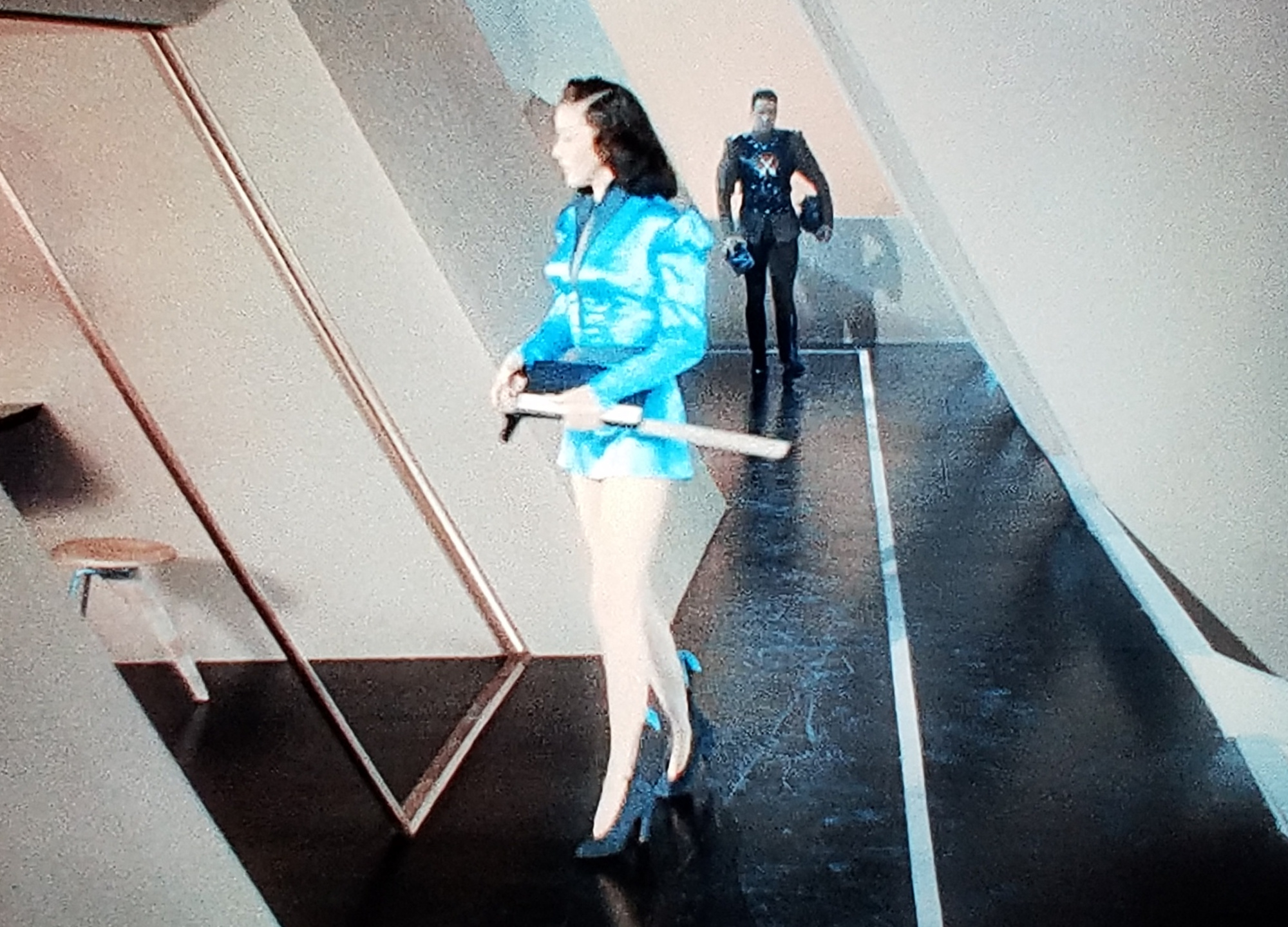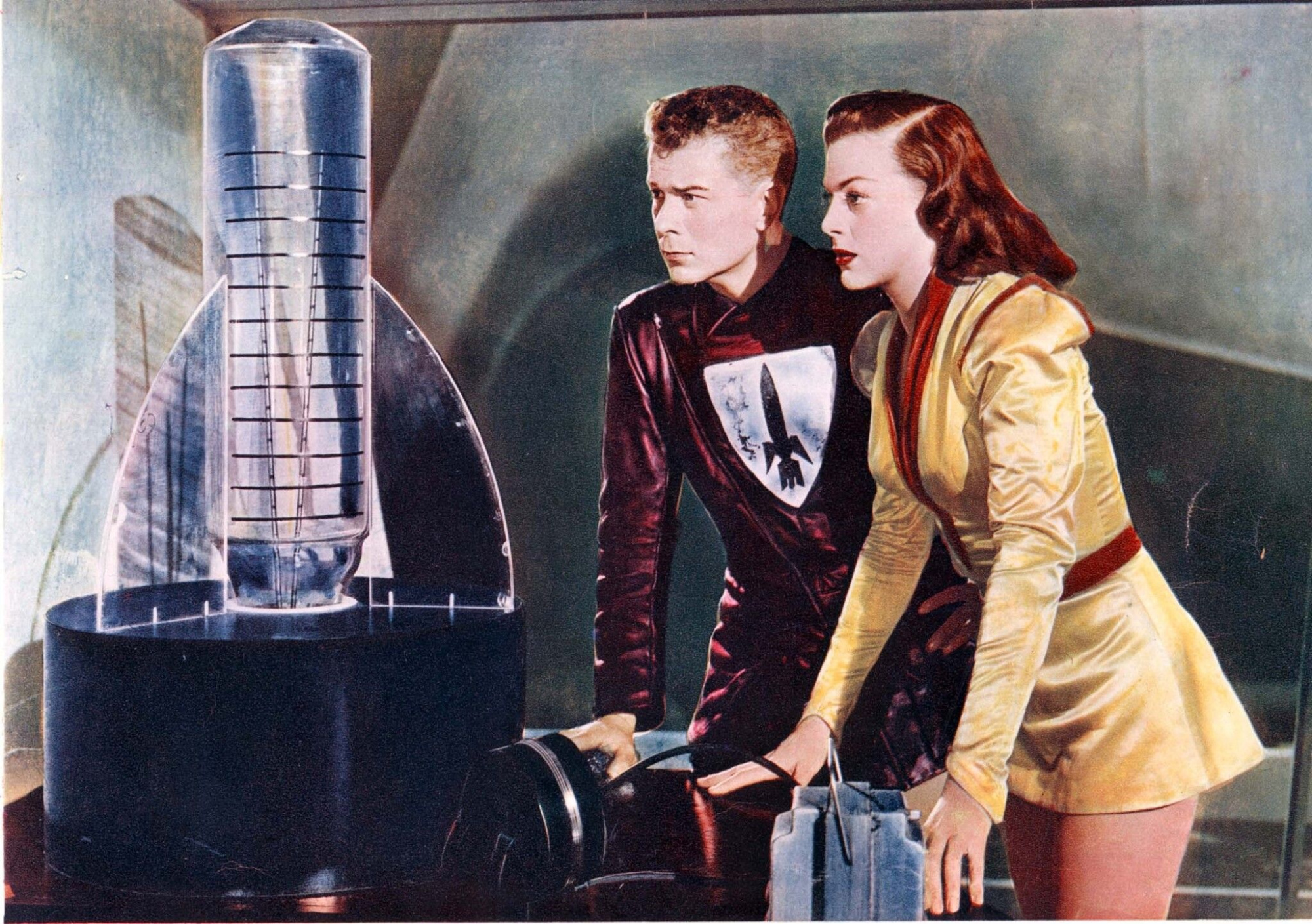There are 1950s sci-fi movies that are fun because they are so campy and cheaply-produced – the targets of many episodes of “Mystery Science Theater 3000 — and others that are pioneering and feature remarkable visual effects for their day and impressive and forecasts of the future.

The immaculate newly-restored 70th anniversary 4K special edition of the 1951 35mm Cinecolor “Flight to Mars” (by The Film Detective, released July 20 by Cinedigm on Blu-ray for $24.95 retail at MVD; $17.99 at Amazon), offers neither of those reasons to watch, but is a kick nonetheless. It actually skews more towards the campy side of the ledger, but not so much in its dialogue as in its obviously low-budget production with the exception of a handful of innovative shots — we learn through the new audio commentary by author/film historian Justin Humphreys and in the two fascinating new featurettes that the movie was produced in just five days — and in its presentation of women who wear micro-mini-skirts and heels that add several inches to the appearance of their legs going on forever, even on Mars (primarily former model and Howard Hughes protégé actress Marguerite Chapman). Upon landing on Mars for the first time by any Earthling and meeting a team of natives — humans who live underground there and speak English — the first thing the female Earthling astronaut is excited to see is the Martians’ kitchen. Of course.


It’s also amusing to see how casual the mission is just six years before the first man actually went into space — couple days of prep, walk onto the spaceship wearing everyday shirts and jackets, simply sit down in what looks like a desk chair and buckle your seat belt, and you’re off for Mars! Most of the rooms in the Martians habitat look like employee break rooms at a factory.
And one of the few close-ups in the film shows a shot of a letter being written by the most philosophical and introspective member of the crew, with a misspelling of the word satisfactorily.

The five-member crew are initially warmly welcomed by the Martians but they soon learn that the Martians intend to steal the Earthlings rocket because they have depleted the key mineral used to power their life support systems. So the Earthlings must devise a plot to take off quietly, but also with the long-legged Martians who have captured the, er, hearts, of a couple of the Earthlings.
The first of two 14-minute bonus features from Ballyhoo Motion Pictures, Walter Mirisch: From Bomba to Body Snatchers, is a fascinating and informative summary of the young man from Milwaukee who pushed the small independent Monogram Pictures to produce more prominent films like Flight to Mars (it played for months in theaters against competition from Paramount’s much bigger George Pal production “When Worlds Collide,” according to a 12-page color insert booklet with a Mars at the Movies essay by award-winning author Don Stradle) and eventually transformed Monogram into Allied Artists, which became much more highly regarded and eventually produced one of the best movies of all time, The Man Who Would be King. And Mirisch went on to produce classics such as Some Like It Hot, The Magnificent Seven, West Side Story, The Great Escape, and The Pink Panther.
Science-fiction artist/historian Vincent Di Fate provides helpful context of the years of science-fiction in cinema and novels leading to 1951 in the entertaining 10 1/2-minute featurette Interstellar Travelogues: Cinema’s First Space Race.
Humphreys’ audio commentary is a puzzling addition to this special edition since the bulk of his comments denigrate the quality and significance of Flight to Mars, noting repeatedly the many other films of the era that were far better. It’s like he’s constantly trying to convince you that you should not have wasted your money on this movie and makes you wonder why you are continuing to watch it and why you are still listening to him.
— By Scott Hettrick
